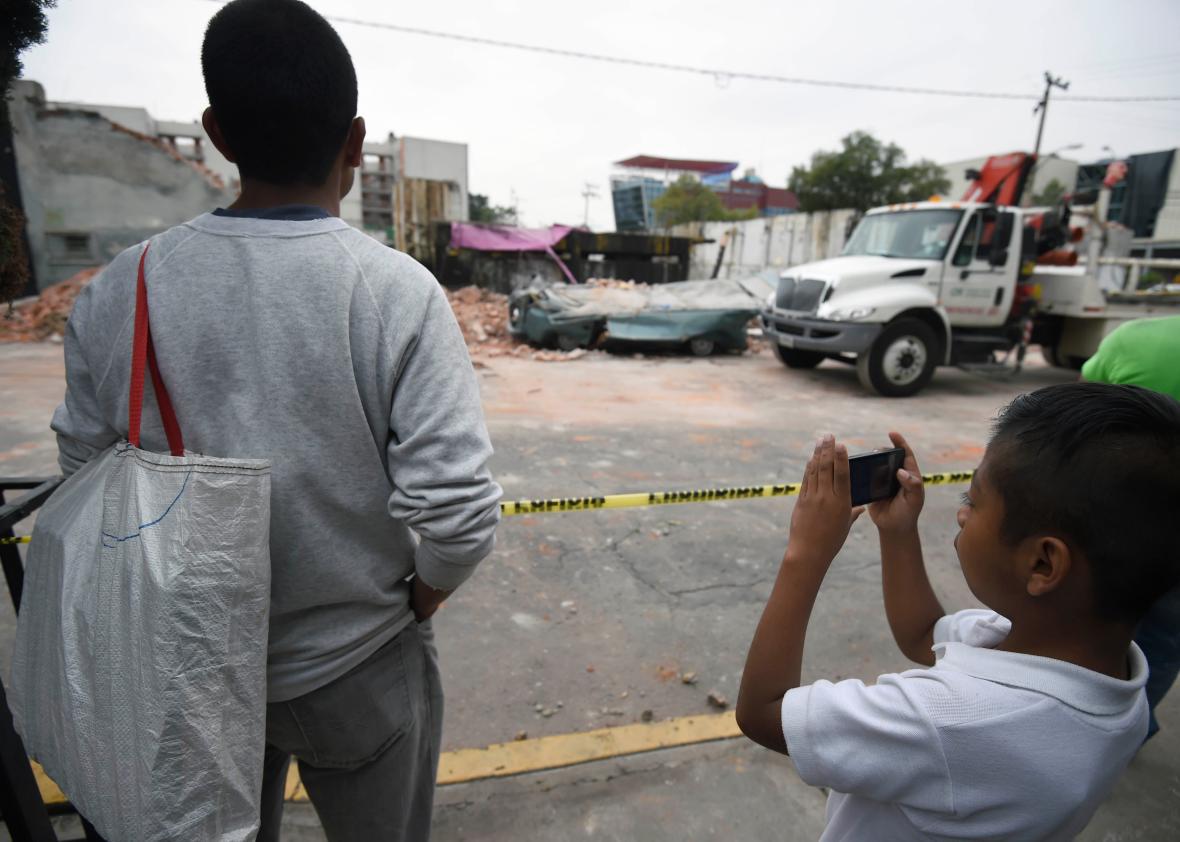As if the Americas weren’t taking enough of a beating from nature this week, Mexico was hit late Thursday night with a magnitude 8.2 earthquake. At least 32 people were killed and damage is likely to be severe in the southern state of Oaxaca and Chiapas. And yet, the damage seems relatively limited. Earthquake-prone Mexico City—the largest city in the western hemisphere—certainly felt the impact, as this video of the famous Ángel de la Independencia monument shows, but the damage was not extensive:
This is fairly remarkable given that 32 years ago, a slightly less powerful 8.0 earthquake devastated the city, killing thousands. In part this was a matter of location—the epicenter of that quake was much closer to the city than this one, which hit off the coast of Chiapas. But Mexico is also a much different and less vulnerable country today, in large part because of that 1985 disaster.
Estimates of the casualties caused by the 1985 quake range from 2,000 to 40,000—a disparity that tells you something about how well the response was organized. More than 3,000 buildings in Mexico City were severely damaged, and towns outside the capital were devastated by landslides and tsunamis. The federal government was slow to provide emergency services, leaving civilian volunteers to pick up much of the slack. Then President Miguel de la Madrid ordered a media blackout, downplayed the death toll, and was accused of prioritizing aid for areas where his political support was stronger. The public backlash to the 1985 quake is often cited as a factor that led to the end of one-party rule in Mexico, though Madrid’s PRI would continue to rule until 2000.
On a more practical level, Mexico City rebuilt extensively and got smarter about earthquake preparedness. The city is a geological nightmare: It’s build on top of an old lake bed filled by the Aztecs and later the Spanish, and the loose soil can amplify earthquakes long after they’ve dissipated. But the city took steps to manage the risk, updating its building codes and more tightly regulating them. The country’s engineering schools focused on earthquake engineering; partnerships were formed with the U.S. and Japan to study the topic. Early warning systems were developed, and evacuation drills became routine for schools and offices.
There are still problems: The city is growing rapidly, and building code enforcement is much less stringent in newer, poorer areas and the outskirts. Other parts of the country—including the southern states hit by the latest quake—aren’t as prepared. But still, the efforts have clearly paid off: A 7.4 quake that hit Southern Mexico in 2012 caused no deaths.
Even the most stringent preparations can’t eliminate the risk of catastrophe. Japan is the most seismically prepared nation on earth but was still devastated by the triple blow of an earthquake, tsunami, and nuclear disaster in 2011. But it’s also true that the enforcement of building codes and the speed and efficiency of rescue efforts often has more to do with the final damage caused then that actual strength of the earthquake.
Thursday’s Mexico quake was deadly serious, but the country was also ready for it, in large part because of the tragedy of 1985. Alarmingly, there are other developing megacities in the world where scientists have identified a substantial earthquake risk—Istanbul and New Delhi for instance—that haven’t had major quakes in recent decades and therefore haven’t taken many of the steps necessary to prevent catastrophe.
It’s a sad fact that we tend to only prepare for disasters after they’ve already happened.
